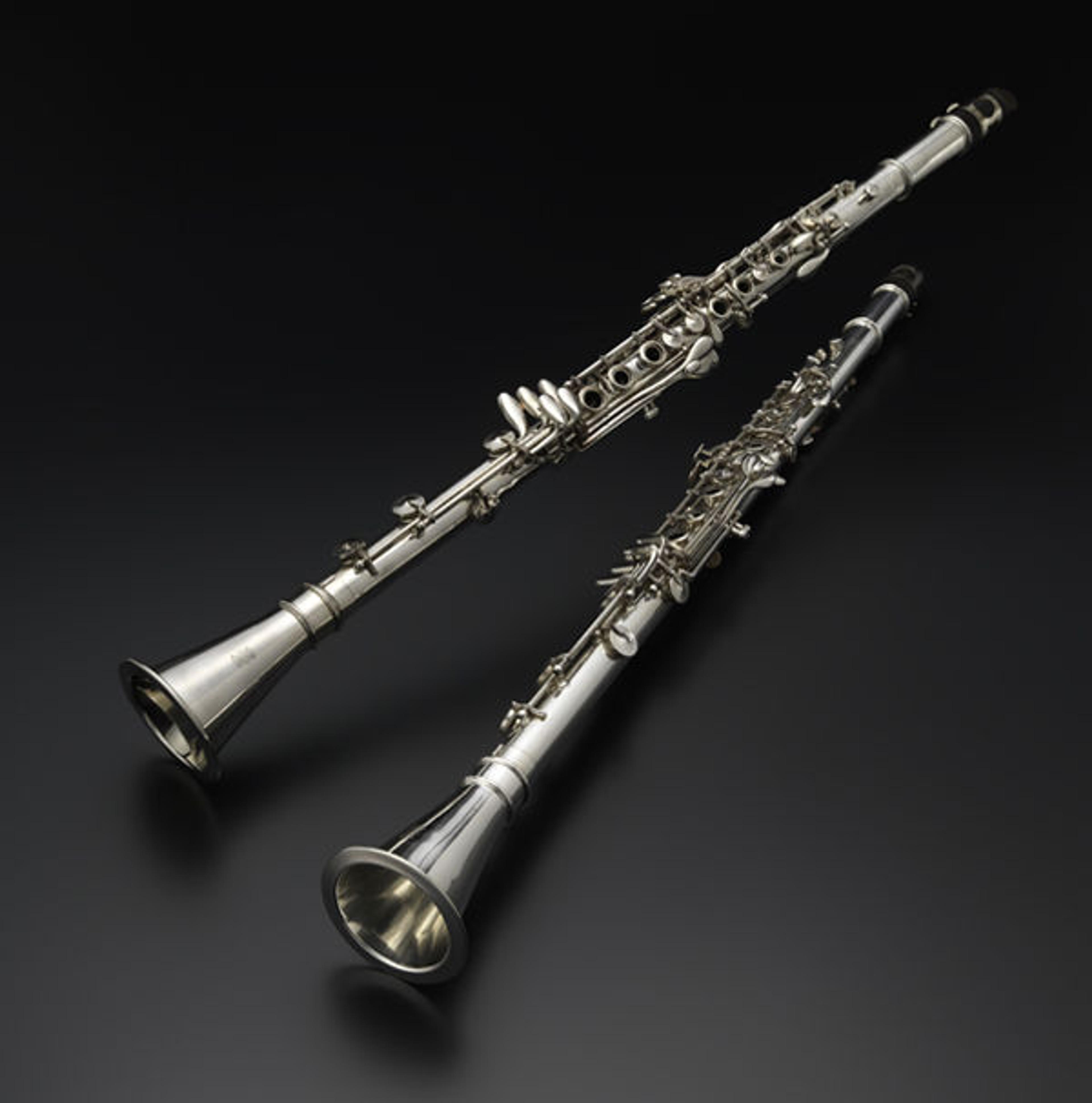
Clarinets in B flat and A. William S. Haynes Co. Boston, Massachusetts. 1930. The Metropolitan Museum of Art, New York, Purchase, Robert Alonzo Lehman Bequest, 2012 (2012.571.1; 2012.571.2,.3)
«Unlike violinists, French horn players, and most other members of the orchestra, clarinet players usually have a pair of instruments at hand to tackle the concert repertoire. Look closely at the clarinet section and you will notice them switching between instruments during a performance. This is because music in flat keys is easier to play on the B-flat clarinet, while music in sharp keys lies best under the hands on the A clarinet. Clarinets are better in tune when they can be warmed up before playing—a problem when switching back and forth quickly between instruments.»
The William S. Haynes Company addressed this challenge with these innovative "thermoclarinets," produced from 1926 to 1942. Like the flutes produced by Haynes, these instruments were made of fine silver. Their double-wall construction featured a set of vents that enabled the player to exhale warm air into the cavity between the inner and outer walls, quickly and silently bringing the instrument to a uniform temperature along its whole length. This pair of thermoclarinets is unusual in that both the B-flat and A instruments feature a full Boehm key system.
Despite this inspired design and the highest level of quality and workmanship, the thermoclarinet failed to achieve lasting favor among conservative orchestral players, and few were produced. Players may have been deterred by the metal body, a material unfairly marred by its association with poorly made band instruments. Dwindling supplies of the tropical hardwoods preferred for the production of professional-level clarinets may again reignite the search for new materials and innovative design ideas.